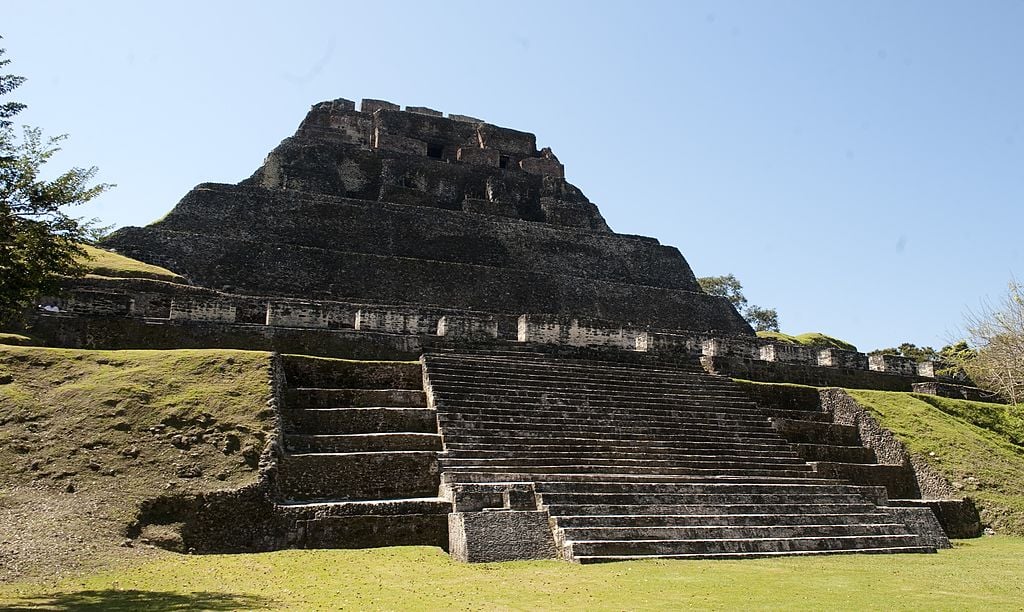
Archaeologists working in Belize have discovered the largest Maya royal tomb in over a century of excavations of the site, which has revealed evidence of the little known “snake dynasty.”
The royal tomb was discovered in the ancient site of Xunantunich, which sits on the Mopan River in western Belize. The area was used as a burial ground towards the end of the Maya era, between 600 to 800 AD, and archaeologists had to dig down to between 16 and 26 feet, through millennia of layers of soil, to find the tomb.
The team, from Northern Arizona University and the Belize Institute of Archaeology, discovered the remains of a man, who was between the ages of 20 and 30, lying with his head facing south, in a large stone chamber accessible by a flight of stairs.
The man appears to have been muscular in build, but experts will need to further analyze his remains before a cause of death and any other personal details can be revealed. Found with the body were animal bones, jade beads, 13 obsidian blades, 36 ceramic vessels, and “eccentrics” (flints carved into the shape of leaves and animals).
“It certainly has been a great field season for us,” team leader Dr. Jaime Awe told the Guardian. “[… ] It appears that the temple was purposely erected for the primary purpose of enclosing the tomb. Except for a very few rare cases, this is not very typical in ancient Maya architecture,” he added.
Mayan Temple in Xunantunich, where the great discovery has been made. Photo by Chris Jackson-Pool/Getty Images.
The parallel discovery of tombs and tablets revealing information about the “snake dynasty,” which ruled areas of Belize during the seventh century, is considered to be even more important that of the royal tomb. The two panels, carved with hieroglyphs featuring the snake’s head symbol of the dynasty, are thought to tell of Lord Kan II’s defeat of the town of Naranjo.
According to the team’s epigrapher, Christophe Helmke from the University of Copenhagen, the hieroglyphs are believed to have been commissioned by Lord Kan II in 642 AD and reveal much about the ancient civilization.
“[The tablets] tell us of the existence of a king of the dynasty that was a murky figure at best, who is clearly named as Waxaklajuun Ubaah Kan,” Helmke wrote to the Guardian in an email. “This means that there were two contenders to the throne, both carrying the same dynastic title, which appears to have been read Kanu’l Ajaw, ‘king of the place where snakes abound’.”
Awe has no explanation for the panels being found in Xunantunich other than that the town may have been allied with Naranjo at some point, other parts of the original, complete panel have been found elsewhere in Belize.